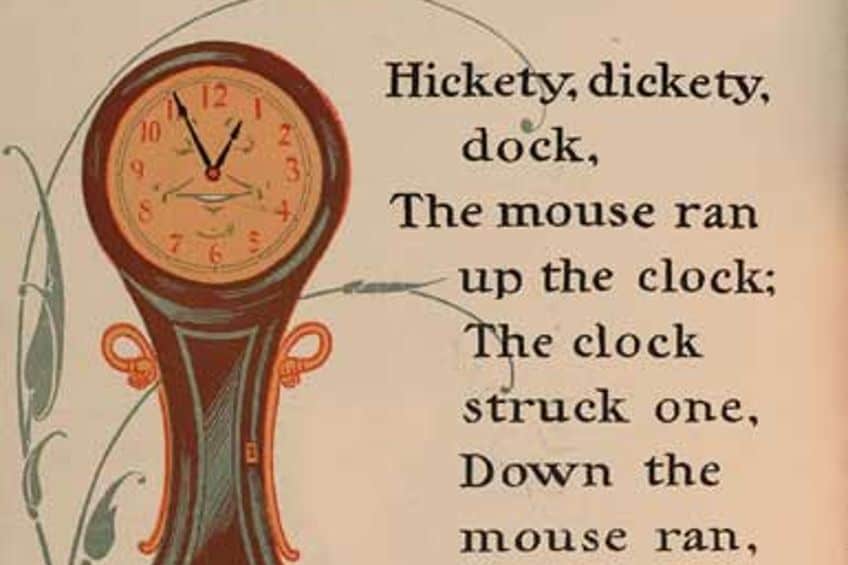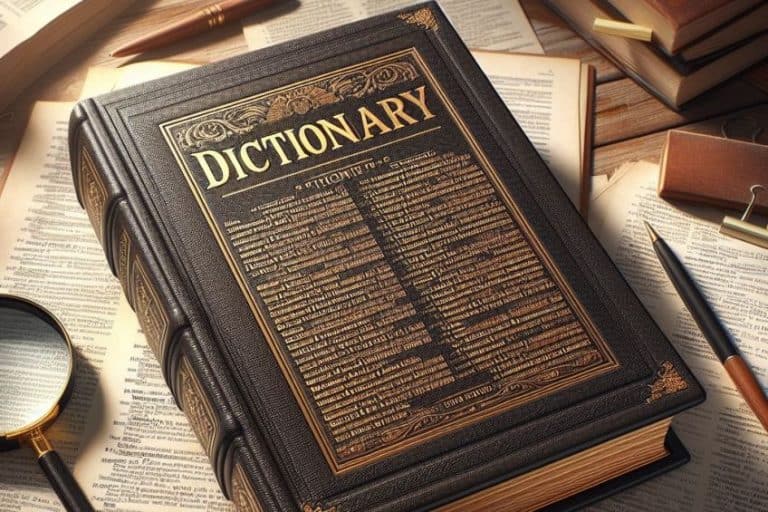Dactyl – Introducing a Complex Poetic Meter
It can be hard to properly identify meter of any variety. The reason for this is because hearing meter in poetry can be a skill that needs to be acquired. This article is here to aid you in understanding one particular type of meter: dactylic meter. We will examine a number of different aspects of this metrical variety, such as what it is in the first place, some of its chief types and characteristics, how it is used in poetic texts, and some examples of dactyl meter in poetry. This will be an introductory examination of the concept for anyone who is interested, and if this sounds like you, then you can move on to the next section of this article to learn some more!
A Look at Dactylic Meter in Poetry
Meter is a commonly used device within poetry. While a poem does not need to make use of meter, there are many poets who have made the decision to include metrical structures within their works. Many of the best-known poets have engaged in this particular practice. Today, our goal will be to examine only one of the many different types of meter that can be found in poetry. In the case of this article, that type of poetic meter will be dactylic meter. This is not as common a form of meter as something like iambic meter, but it is still a rather common variety. So, that is exactly what we’ll do in the following sections.

A Summary of Dactylic Meter
When we get to the idea of poetic feet in poetry, there are a number of options to choose from. Today, our primary focus is oriented around dactylic meter in poetry. This particular form of meter will, of course, be discussed in far more detail as we proceed through the various sections of this article, but before we get into any of that, here is an overview of sorts:
- Dactylic meter is a form of poetic foot. This means that dactylic meter is an aspect of poetry that has to do with the arrangement of syllables. Each line of a poem provided the poet has used metrical composition, will be produced with a specific number of syllabic units that are made up of unstressed and stressed syllables.
- Dactylic meter is arranged as three syllables. While there are many different types of poetic foot in the world, dactylic meter makes use of three distinct syllables in each foot. While some of the more common forms of poetic foot instead only make use of two syllables per foot.
- Dactylic meter makes use of a stressed-unstressed-unstressed arrangement. When it comes to the precise arrangement of syllables in dactylic meter, it uses those three syllables in a specific order. This is laid out as one stressed syllable that is followed by two syllables, and these two syllables are unstressed.
While this generalized overview has provided the basic aspects of dactylic meter for those who would like to further engage with poetic feet, this is hardly a comprehensive examination of dactylic meter.
We should jump into the next section of this article if we want to learn a little more.
A Definition of Dactylic Meter in Poetry
This is a form of meter, and like any form of meter, it has specific rules that make it what it is. In the case of dactylic meter, it is a form of metrical foot in which there are three syllables. These syllables are arranged in a stressed-unstressed-unstressed formation. This means that there is a kind of bouncing flow to this type of metrical foot as one stressed syllable leads into a succession of two separate unstressed syllables.

As with all other forms of meter, dactylic meter will then be arranged according to how many dactylic feet are used in each line of a poem. For instance, dactylic dimeter will incorporate two dactylic feet per line whereas dactylic pentameter will incorporate five. This is something that is consistent across all the different types of meter, but it should always be remembered when we are examining meter in any way.
Different Types of Meter Found in Poetry
Poetry makes use of many different types of meter. While we are discussing dactylic meter today, we should also remember that other forms exist. There are examples of meter that range from iambic meter, with its unstressed-stressed structure, to anapestic meter, with its unstressed-unstressed-stressed structure. Each of these different types of metrical structures makes use of different beats that change the way they can be used within a poem. When it comes to more unusual forms of meter, like dactylic meter, we can often find that it will be incorporated alongside other metrical structures. For instance, a poem might make use of iambic pentameter throughout most of it but then, to create a bouncing rhythm during one section, it might switch to dactylic meter.
All of the different metrical structures can be altered in this way.
The Characteristics and Uses of Dactylic Meter
Seeing as the primary attribute of dactylic meter is its use of a stressed syllable with two unstressed syllables that follow it, we can determine the kinds of characteristics that this would produce for a text. The use of two or more of the same syllables produces a certain kind of bouncing effect. This is true of many of the kinds of meter that incorporate a double-syllable tone.

This form can often be found in instances of epic and narrative poetry because it allows a certain flow to the proceedings in which emphasis can be placed in the beginning that then creates a certain kind of rhythm that follows on from it. This can lead to the creation of a dramatic atmosphere in the poem.
Examples of Dactyl in Poetry
If you want to understand something, it can often be best to have a look at some practical versions of the thing in question. That’s why we’ll soon check out an example of dactyl in poetry. Or, more accurately, we’ll have a look at three such examples. However, each example of dactyl in poetry can get you one step closer to better understanding this particular variety of poetic meter.

Evangeline, A Tale of Acadie (1847) by Henry Wadsworth Longfellow
| Date Published | 1847 |
| Type of Poem | Epic poem |
| Rhyme Scheme | None |
| Meter | Dactylic hexameter |
| Topic | Evangeline’s search for her lost love |
Evangeline, A Tale of Acadie is a lengthy epic poem that follows the story of a woman as she searches for her lost love, and it’s set during the Expulsion of the Acadians. In this particular case, the use of dactylic hexameter, as the poem uses, is a famous form of dactylic meter because it was used in various epics, such as Homer’s Iliad. However, it is most associated with epic poems in other languages.
This can show how an example of dactyl in poetry can be used to serve as a callback of sorts to other classic forms of literature that made use of similar forms of meter and similar general structures.

The Charge of the Light Brigade (1854) by Alfred, Lord Tennyson
| Date Published | 1854 |
| Type of Poem | Narrative poem |
| Rhyme Scheme | None |
| Meter | Dactylic meter |
| Topic | The charge of the Light Brigade |
The Charge of the Light Brigade is a lengthy narrative poem that recounts the story of the charge of the Light Brigade. This was a failed action by the British military during the Crimean War, and the use of dactylic meter allows for this poem to produce a highly rhythmic series of lines. It is used as a means of emulating the galloping of the horses that would have sounded during this military campaign. This indicates the ways in which metrical structures can also be used for onomatopoeic reasons rather than simply for tonal reasons.
There are, as this example of dactyl in poetry indicates, many different ways that meter can be used in poetry.

When Lilacs Last in the Dooryard Bloom’d (1865) by Walt Whitman
| Date Published | 1865 |
| Type of Poem | Elegy |
| Rhyme Scheme | None |
| Meter | Variable |
| Topic | Mourning for Abraham Lincoln |
When Lilacs Last in the Dooryard Bloom’d is one of the various poems written by Walt Whitman that was produced to commemorate the death and celebrate the life of Abraham Lincoln. In this particular poem, the death of the president is incorporated into an understanding of the cycle of life and death that surrounds us all. The poem, like many Whitman poems, is in free verse, but there are some sections that adhere to a dactylic structure. The poem as a whole is not written in dactylic verse, but these sections show how even a free verse poem can incorporate elements of poetic rules to create certain effects.

This has not been the lengthiest of articles, but it has been enough to give you a rundown of things that you should expect out of dactylic meter in poetry. This concept is not particularly difficult to understand, but there are also so many different types of meter that it can be hard to keep track. This is why we went over the idea of dactylic meter in poetry, some of its characteristics and types, uses, and even a handful of examples of dactyl in poetry. With each of these sections in check, we should be able to conclude here knowing that dactylic meter has been sufficiently explored.
Frequently Asked Questions
What Is Dactylic Meter?
This is one of many different types of poetic meter. When it comes to dactylic meter in particular, it is a form of metrical foot that makes use of a three-syllable structure. Many of the most famous varieties only use two syllables. In this case, it uses a stressed syllable in the beginning while two unstressed syllables follow it.
Which Types of Meter Exist Other Than Dactylic Meter?
It can be difficult to identify every single type of meter, as there can be significant variability, but there are several major forms. These include iambic, trochaic, and spondaic meter, and dactylic meter in poetry is one of those types. Each of the different types of meter can be said to have their own specific attributes.
How Common Is Dactylic Meter in Poetry?
This type of meter is not all that common in the English language. The reason for this is because the English language is not typically arranged in the particular way that dactylic meter is arranged. This usually then requires that a poet pays very close attention to the use of syllables in their lines to ensure the use of dactylic meter.
What Are the Characteristics of Dactylic Meter?
The primary reason to make use of dactylic meter is usually to create a more punchy and forceful moment within a poem. This is because the first stressed syllable serves as that punch that can then lead into two unstressed syllables that serve as a wind-down of sorts.
What Are Notable Examples of Poems That Use Dactylic Meter?
It is somewhat difficult to find a consistent example of dactyl in poetry, but there are instances of the form, such as Evangeline, A Tale of Acadie (1847) by Henry Wadsworth Longfellow, The Charge of the Light Brigade (1854) by Alfred, Lord Tennyson, and When Lilacs Last in the Dooryard Bloom’d (1865) by Walt Whitman. Many varieties in the English language will use variable meter if dactylic meter is used.
Justin van Huyssteen is a freelance writer, novelist, and academic originally from Cape Town, South Africa. At present, he has a bachelor’s degree in English and literary theory and an honor’s degree in literary theory. He is currently working towards his master’s degree in literary theory with a focus on animal studies, critical theory, and semiotics within literature. As a novelist and freelancer, he often writes under the pen name L.C. Lupus.
Justin’s preferred literary movements include modern and postmodern literature with literary fiction and genre fiction like sci-fi, post-apocalyptic, and horror being of particular interest. His academia extends to his interest in prose and narratology. He enjoys analyzing a variety of mediums through a literary lens, such as graphic novels, film, and video games.
Justin is working for artincontext.org as an author and content writer since 2022. He is responsible for all blog posts about architecture, literature and poetry.
Learn more about Justin van Huyssteen and the Art in Context Team.
Cite this Article
Justin, van Huyssteen, “Dactyl – Introducing a Complex Poetic Meter.” Art in Context. January 17, 2024. URL: https://artincontext.org/dactyl/
van Huyssteen, J. (2024, 17 January). Dactyl – Introducing a Complex Poetic Meter. Art in Context. https://artincontext.org/dactyl/
van Huyssteen, Justin. “Dactyl – Introducing a Complex Poetic Meter.” Art in Context, January 17, 2024. https://artincontext.org/dactyl/.









